Category: Welding
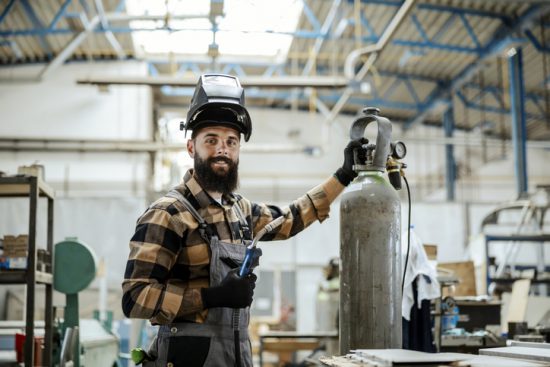
Welding professionals are responsible for joining metal parts together for different types of metal structures, including buildings, power plants, ships, pipelines and refineries. Training to become a Welder is a great way to secure a successful and rewarding career that you can be proud of.
At NATS, you’ll receive hands-on training in Gas Metal Arc Welding (GMAW or ‘MIG’), Gas Tungsten Arc Welding (GTAW or ‘TIG’), Flux Cored Arc Welding (FCAW) and Shielded Metal Arc Welding (SMAW or ‘Stick’). You’ll also learn techniques for basic joint welding, welding preparation, weld symbols and much more. Upon completing your training, this experience will prepare you to pursue a wealth of opportunities within the welding sector. You can begin your career in a junior position, and then gradually advance to other positions as you gain experience and skills.
Here, learn more about the career advancement opportunities you can access later in your career.
Become a Welding Inspector After Welding College
After several years of working as a welding professional, you may consider advancing your career and becoming a Welding Inspector. As a Welding Inspector, you’ll be managing other welders, with the responsibility of ensuring that all job specifications for the project at hand are met. Your welding college training, knowledge, and experience in health and safety will be of help when becoming a Welding Inspector. Your expertise will be needed to ensure that bridges, buildings, and other structures are structurally sound, performing visual inspections to catch any errors in the weld, such as cracks or pits. As a Welding Inspector, you’ll also be testing the stress level of the welds to make sure that they meet the required levels of ductility and strength.

Consider Becoming a Boilermaker
With welding technician training and additional experience working as a Welder, there are a few other advancement options you might want to consider during your career. For example, you may choose to work towards becoming a Boilermaker. As a Boilermaker, you’ll have the opportunity to build, install, maintain and repair the pressure vessels designed to store various gases and liquids. The pressure vessels boilermakers work with might include reactors, heat exchangers, boilers, tanks, closed vats or other containers. These professionals often work within energy facilities including hydro and oil-sands plants, as well as steel, chemical, cement and other manufacturing plants.
If you’re considering a career as a Boilermaker, you may need to complete additional training in the construction and maintenance of boilers, applying your background in welding to the field. You’ll use your welding skills to assemble boiler tanks, inspect and repair leaks and defects, and complete other necessary work orders.
Pursue a Career as a Pipe Fitter
Are you attentive to detail, or do you possess an aptitude for mechanics? If so, a career as a Pipe Fitter could be right for you. Pipe fitters are responsible for designing, installing and repairing pipe systems, using their background in welding to safely secure pipes to fixtures, walls and other system components. As a pipe fitter, you’ll spend time creating intricate pipe systems in alignment with industry specifications and regulations, measuring pipes to determine where they should be cut, and putting together piping using various welding techniques.
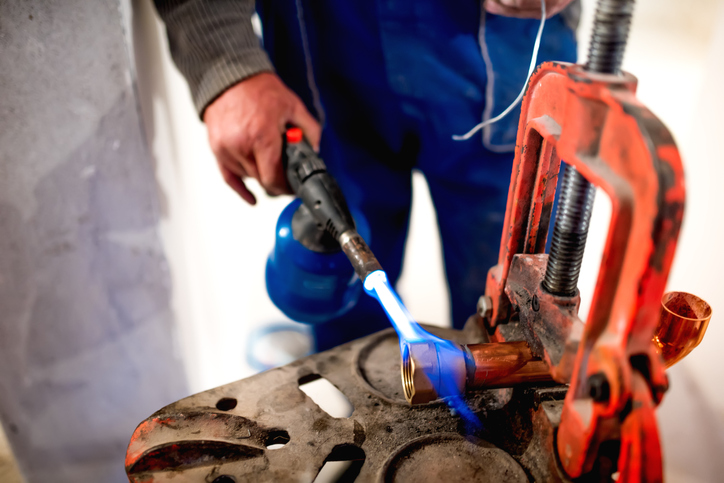
Successful pipe fitters have plenty of welding experience, enabling them to perform the often complicated welds necessary for pipe fitting projects. What’s more, these professionals possess a strong understanding of industry standards and codes, ensuring that they develop pipe systems which are able to safely transport hazardous chemicals. If this career path interests you, consider specializing in pipe fitting after completing your welding training.
Are you interested in welding classes?
Contact NATS for more information about our training programs!
A Guide to the Different Types of Welding Processes for Pros in Welding Technician Training
February 15, 2022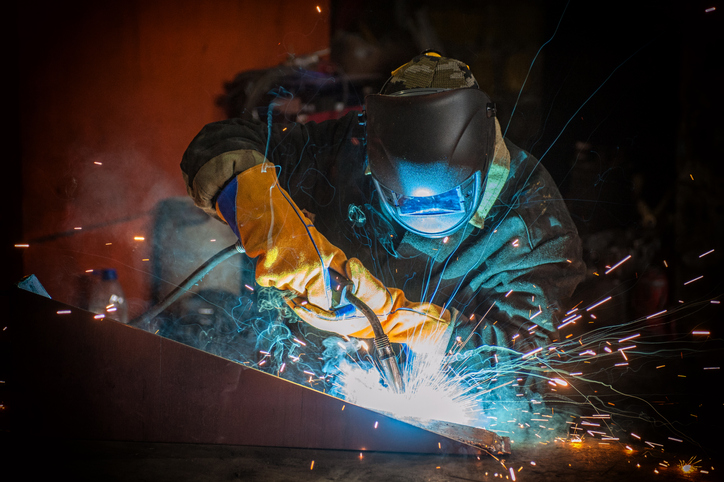
For aspiring welding professionals, there are endless opportunities to apply your trade. Without welding, many industries like the construction industry, aviation, automotive and more would not exist in the way that they do today. Buildings, appliances, vehicles, fences and space shuttles would have never come to life without the art of welding metals.
At the NATS, you’ll get hands-on and theoretical training in the field of welding, using modern equipment for different welding processes. By understanding some of the most common welding processes, you can launch a successful and skilled career. Read on to discover the different types of welding processes worth knowing.
Know The Simplest Form of Welding After Your Welding Technician Training
Stick Welding, or Shielded Metal Arc Welding (SMAW), is the simplest form of welding. This form of welding produces a constant current electric arc, using a power source. The current flows through a flux in the coated welding electrode. This coating mechanism ensures that the weld zone is not exposed to air while the rod is melting. You’ll realize after welding technician training, how cheap stick welding is and how compatible it is with most metals out there. This will allow you to work with stick welding in many industries, for shipbuilding, pipelines, constructions, and much more.
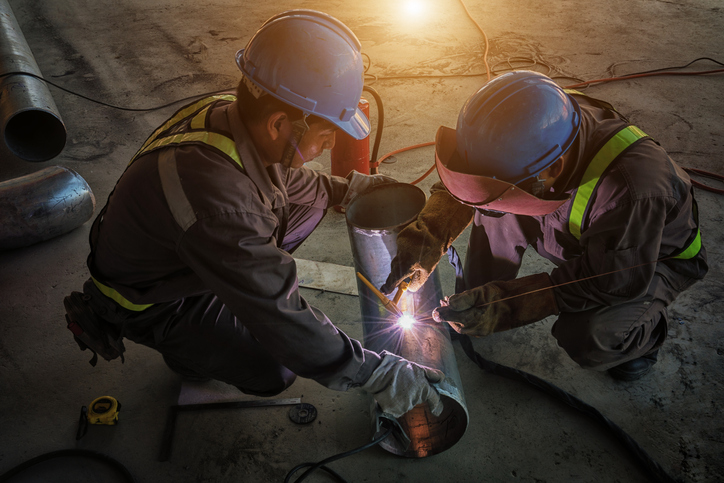
MIG Welding Is the Way to Go for D.I.Y Projects
MIG Welding, which is short for Gas Metal Arc Welding, is one easy type of welding that forms an electric arc between a consumable MIG wire and the piece you are welding. After you train at a welding college like NATS, you’ll be prepared to perform this type of MIG welding. You’ll see how MIG welding creates heat and causes the materials you’re working on to melt and join, forming a piece of molten metal. The heat that occurs during this welding process is covered by a shielding gas, which protects the welding from any contamination. MIG welding is also the method of choice for those who don’t want to spend too much on welding equipment.
Gain Experience and Start TIG Welding
TIG Welding, which is the short form for Gas Tungsten Arc Welding, delivers electric current to the weld section, using an arc welding process that uses a tungsten electrode. This type of welding has a non-consumable electrode. Welding also requires the use of Argon, a type of shielding gas that protects the weld metal from any contamination. This form of welding is not for everyone. In order to perform TIG welding without any challenges, you need to have proper training and gain experience in the field. TIG Welding is generally used to weld thin areas of aluminum, magnesium, copper alloys and stainless steel.
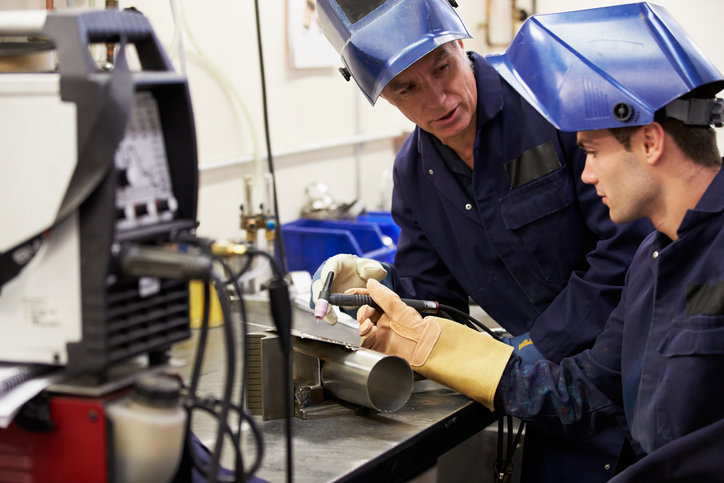
Finally, the Flux Cored Arc Welding
Flux Cored Arc Welding (FCAW) is an automatic or semi-automatic welding process. FCAW requires a consumable to be continuously fed a tubular electrode that contains a flux. It also requires a constant power supply and an external shielding gas to be supplied to protect the weld metal from any contamination. While most flux-cored wires can run without gas, some cannot. As a professional welder, you’ll have to refer to the manufacturer’s datasheet to know which welding wire to use. Flux Cored Arc Welding can be used for shipbuilding, heavy fabrications, constructing, welding and earthmoving.
Interested in enrolling in welding classes?
Contact NATS for more information!
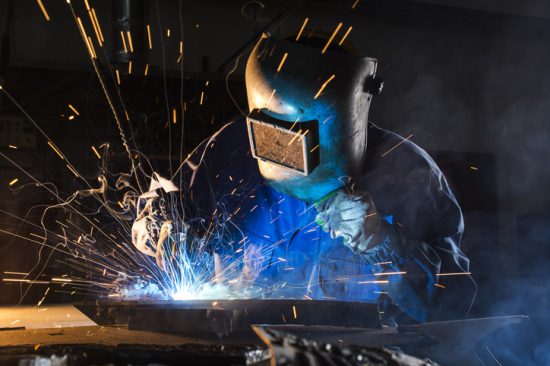
Are you looking for a new profession? When you choose to embark on a career path as a welder, you can make 2022 your most rewarding year yet. Trained in using welding equipment and processes to combine pieces of metal, professional welders are qualified to work in the construction industry, aviation industry, and automotive industry. These professionals can even choose to operate a business of their own.
If you love working with your hands and are constantly seeking your next creative outlet, an engaging career as a welder could be right for you. Below, discover five compelling reasons to begin welding courses and transform your future in 2022.
1. Demand for Pros with Welding Technician Training is Growing
One of the greatest benefits of attending welding college is that your skills will be in high demand within the construction industry and beyond. The trades are currently facing labour shortages as the baby boomer generations inch closer to retirement. That means there will be plenty of opportunities for those looking for work in the skilled labor sector. If you’ve been considering a career change, training to become a welder is a great way to secure a successful future.
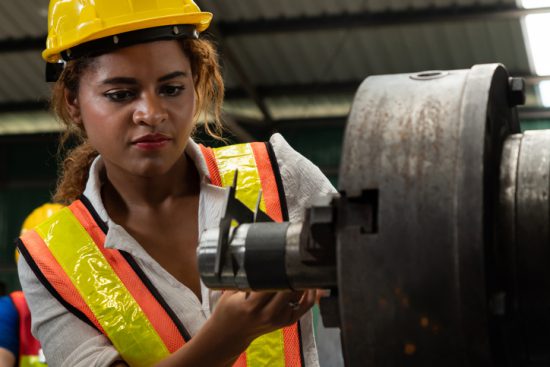
2. Choose from a Variety of Specializations
Training for a career should be a stepping stone, and with welding, that’s certainly the case. When you build the skills to become a professional welder, you’ll be able to specialize in a number of roles within the welding industry. You may choose to apply your skills within the manufacturing industry, the oil and gas industry, or perhaps work for a construction company. As a welder, you can also decide to become a boilermaker, a pipefitter, or an ironworker. No matter your interests, it’s easy to pursue them with welding training.
3. Welding is a Rewarding Profession
In addition to being extremely engaging, welding is a highly rewarding career path. After welding technician training, you’ll see your hard work pay off as you continue to develop your skill set. With dedication, there are many opportunities for advancement within the welding field. After gaining experience you can move beyond the role of the apprentice, to that of a supervisor, technician, instructor, or inspector. If you’re particularly passionate, you might even consider opening your own welding business!
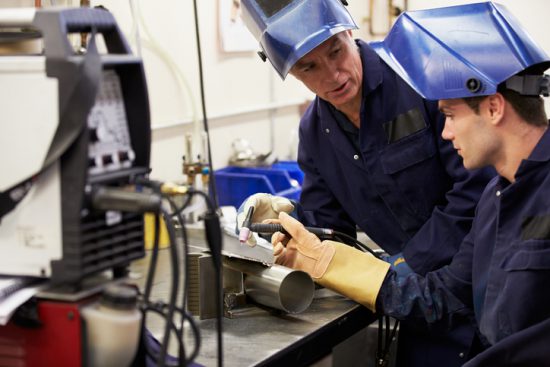
4. Benefit from an Active Career
With the hands-on work and exciting opportunities that accompany a welding career, you’ll have the ability to maintain an active lifestyle while on the job. As a certain level of physical fitness is required to keep up with the demands of the job, most welding professionals are able to stay in shape for a long time–contributing to a healthy lifestyle. If you’re looking for an alternative to a typical office job or a non-sedentary career path, welding is the perfect way to keep on top of your health and fitness, while rarely sitting for hours at a desk.
5. Be Career-Ready in a Short Period of Time
If you’re all set to plan your transition to a welding career, you’ll be happy to know that not only is this a rewarding profession, but you can obtain your welding diploma and certification in a matter of months. At NATS, students receive hands-on and theoretical training in the welding field, preparing them to enter the industry as skilled professionals. So why wait? Take the leap and embark on a career path in welding in 2022!
Are you ready to begin your welding classes?
Contact NATS to learn more about our program!
Taking Welding Classes? Why You Should Consider Pursuing an Apprentice Boilermaker Position
December 07, 2021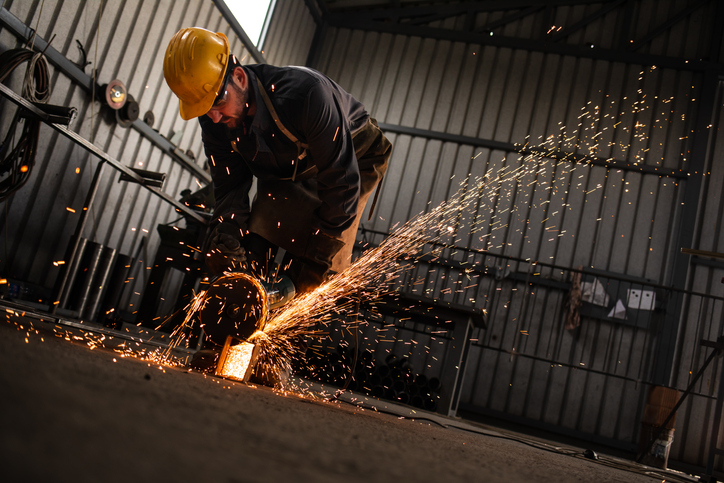
The best way to learn a trade is through hands-on experience in the field. This allows you to be job-ready, skilled, confident, and assume control of your choice of career path. An apprentice position is the key to establishing yourself as a skilled tradesman. It provides you with the necessary tools, skills, and credentials to get the job done–in different places–and within different settings. Studying theoretical concepts and knowledge is valuable, but especially so when combined with real-life training.
If you’re considering learning a trade, such as welding or are already learning one, a Boilermaker Apprenticeship opportunity is the way to go along with it. Read on to learn more.
Welding Technician Training That Makes a Difference
Welding Technician training prepares students for opportunities like an Apprentice Boilermaker position. At NATS, students have access to state-of-the-industry campuses providing ample opportunity to gain critical welding experience, while using modern equipment in welding processes.
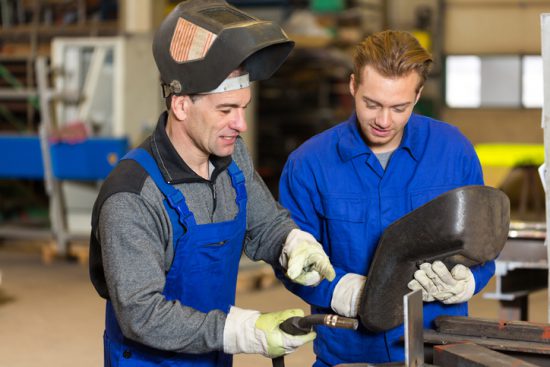
Our Structural & Pressure Vessel Welder Diploma Program will provide you with the knowledge and skills needed to set you on the right path as an apprentice and towards a fulfilling career with many opportunities.
No Day is the Same as a Boilermaker Apprentice
If you are looking for an exciting and fulfilling career, an Apprentice Boilermaker position could be the right choice. As an apprentice, you will experience different working conditions and develop essential skills that will propel your career towards succeeding at any work-related job site. Some of these skills include installation, maintenance, repairing, and troubleshooting when using stationary industrial machinery and mechanical equipment. You gain expertise in operating hoisting and lifting devices, which include jacks, tractors, cranes, and many more. You’ll get to learn to work on the ground, as well as a hundred feet above the ground, using heavy machinery that weighs by the tonne.
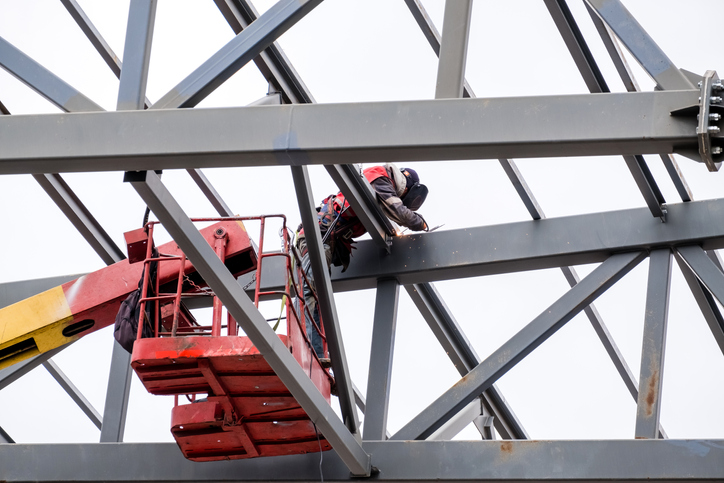
Welding classes at NATS will prepare you for the working conditions you will experience as an apprentice–such as tight spaces, and in varying climates, ranging from scorching heat to freezing cold weather.
Plenty of Career Opportunities at Your Fingertips
Graduates of our program have gone off to pursue a variety of career paths, holding many different job titles including: an Apprentice Boilermaker, Apprentice Welder, Construction Millwright Apprentice, and more. The skills you will acquire during your program, and as an Apprentice Boilermaker will equip you to work on: pressure vessels, storage tanks, boilers, towers, heaters, steel, and more. You will also have the opportunity to work at different job sites, such as oil refineries, nuclear power plants, pulp and paper mills, and gas generating stations.
Are you looking for a welding college that will provide you with the skills needed to thrive on this path?
Contact NATS to learn more about our program.
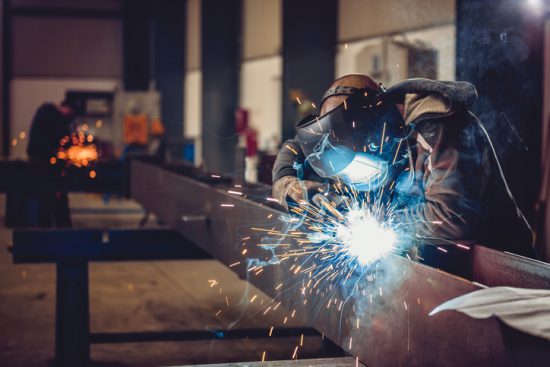
After building industry skills and expertise during your welding training, there’s only one thing between you and a successful career as a professional welding technician. It all comes down to the interview. Performing well in an interview will show a potential employer that you’re not only a qualified candidate for the respective position, but also that you have what it takes to succeed as a welder. While the interview process might seem intimidating at first, when you take the proper steps to prepare for this important meeting, you’ll be sure to succeed. Below, discover five different tips for a successful interview.
1. If You’re Seeking a Welding Career, Research the Company Before the Interview
While some welding skills and processes might be universal, the fact remains that no employer is the same. There are a variety of companies within many different industries, which require skilled welding technicians to perform certain tasks. When preparing for an interview, it’s important to conduct research on the company you’re interviewing with, as well as the position you’ll be applying for. After your welding technician training, conducting this research prior to the interview will ensure that you’re prepared to describe to an employer why you’re a good fit for the position in question. Additionally, you’ll be prepared for any questions that an interviewer might ask you regarding what you know about their company.

2. Make Sure You Dress for Success
If you’re seeking a career as a welder, it will be important to dress appropriately before arriving at any interview. Within the welding industry, it’s typically standard to dress as you would for a welding job. Attire such as a long sleeve shirt, work boots, and jeans are all acceptable to wear for an interview. Additionally, you might want to bring along some basic welding tools and safety equipment, as you may be asked to perform a bench test or other welding procedures for your interviewer.
3. Be Prepared to Answer Questions About Yourself
While your interviewer will want to ensure that you have the necessary skills to succeed in the role in question, they’ll also want to know who you’ll be as an employee. Thus, during an interview for any welding career, you can expect some questions about your motivations for entering the welding industry, as well as your strengths as a welder. Preparing answers to questions like these will help you to show an interviewer who you are as a welder, and what benefits you’ll bring to their company if you’re hired for the position.

4. Demonstrate Your Credentials
In any job interview, it’s important to be prepared to demonstrate your credentials to your potential employer. You’ll want to bring your resume in paper form, as well as proof of your completion of a welding training program. If you have a relevant welding certification, you should also bring this along to an interview. Once your interviewer sees that you’ve completed the required training, they’ll be secure in the knowledge that you have what it takes to succeed.
5. Prepare Questions for Your Interviewer
Last but not least, never show up for an interview without at least a few questions prepared for your employer. In order to come up with your questions, you can use the research you’ve conducted about the employer you’re interviewing with, as well as the job description. An example could be asking the employer what a regular work day would look like at their company. When you ask questions during an interview, your interviewer will know that you’re taking this opportunity seriously, as you’ve taken the time to engage in critical thinking about the position at hand.
Ready to enrol in welding courses?
Launch a successful career with a welding program at the North American Trade Schools.
Graduating from Welding College? Check Out the Career Paths Available to You
August 24, 2021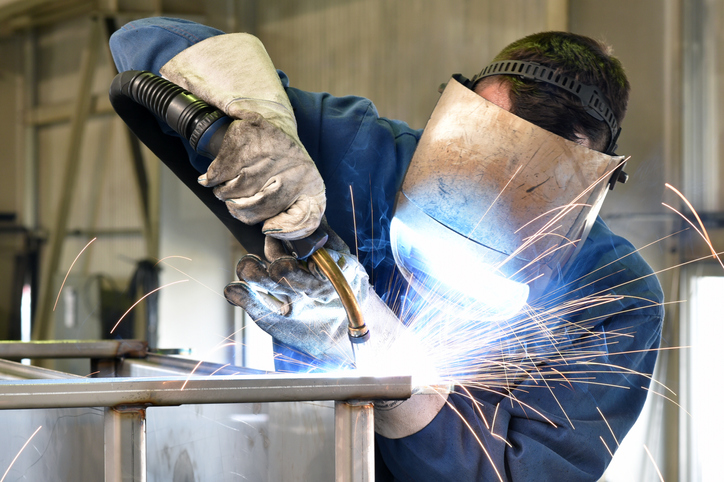
If you’re training to become a welding technician, you may be surprised to know that there are a wide range of career opportunities available to you upon graduating. With the skills you build in a welding technician program, you’ll be able to transition into a number of different work environments and career paths where your knowledge of welding principles will be applied to a variety of projects.
In a welding program, you’ll receive hands-on technical training in the welding arts, learning techniques in Gas Metal Arc Welding (GMAW or ‘MIG’), Gas Tungsten Arc Welding (GTAW or ‘TIG’), Shielded Metal Arc Welding (SMAW or ‘Stick’), and more. You’ll also learn about important safety procedures on the job, in addition to welding-associated mathematics and symbols. After completing your program, you’ll be able to transition into a number of different careers–some of which may require additional training or apprenticeships. Below, explore some career paths within the welding industry.
Become a Welding Technician After Welding Technician Training
Once you complete your welding technician training, one of the most direct career paths you can take is to become a welding technician. Welding technicians apply their knowledge of different welding techniques, materials, equipment, and joining processes to the manufacturing of welded products. These professionals assist welding engineers to develop and implement different techniques in order to produce a high-quality product–ensuring that the manufacturing process is in-line with industry standards and codes. They may work to solve problems, test new products, and perform experiments in order to identify the ideal welding process. If you have strong problem-solving skills, this could be the career path for you.
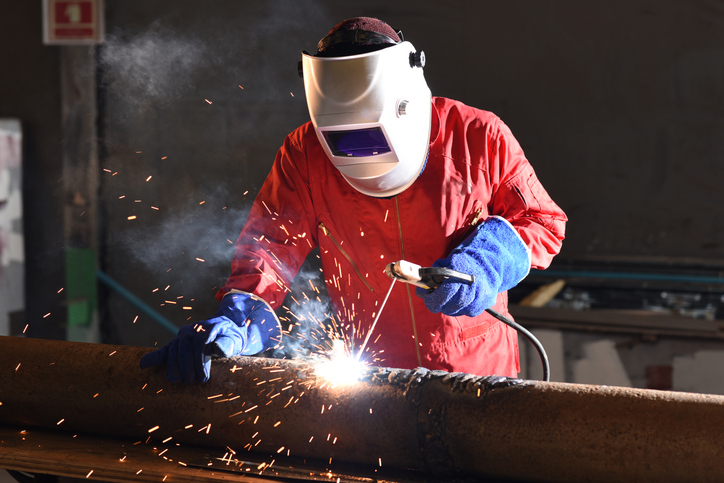
You Might Choose to Become a Boilermaker
One of the many specializations available within the welding industry is that of a boilermaker. Boilermakers work to install, maintain, repair, and manufacture the boilers within different buildings and ships. Boilers are responsible for heating up liquid in order to heat structures or generate electricity. As a boilermaker, you’ll work to interpret blueprints and assemble pre-made boiler components using different welding techniques. With your skills, you’ll be able to ensure that the boiler tank and system you manufacture is structurally sound so that it works safely and effectively.
A Career as a Welding Inspector Suits Those Attentive to Detail
With some additional experience in the welding industry, the knowledge you gain in welding college can translate to a future career as a welding inspector. Welding inspectors apply their knowledge of different welding processes, standards, materials, and methods of testing to the inspection of different welding processes. These professionals work to verify that the product being welded is done in compliance with different safety codes and industry standards–in addition to ensuring that the correct materials and equipment is being used. Their expertise is critical when it comes to ensuring the safety and soundness of the welding project. If there are any mistakes or discrepancies, welding inspectors are responsible for catching them and developing a sound solution. If you have a keen eye for detail, consider this career path after completing your welding training.
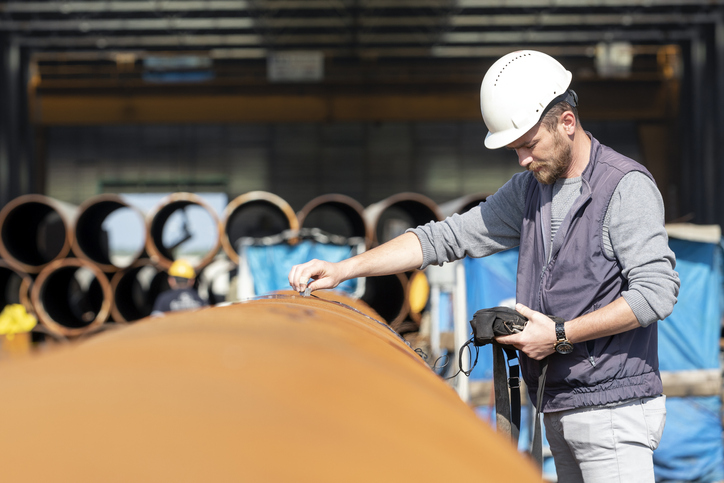
You’ll Be Qualified to Become a Pipefitter
Pipefitters have a dynamic and important job within the industrial manufacturing industry. These professionals are responsible for creating, assembling, installing, and maintaining piping systems used in commercial, marine, or industrial structures. The piping systems they create are typically used to transport fuel, water, chemicals or steam, and often include technical assemblies with hydraulic, high-pressure, cooling, or pneumatic functions. Within this specialized career, pipefitters apply their understanding of piping systems to the implementation of different design plans–creating and maintaining piping systems by applying welding, cutting, and fabrication techniques. If you’re looking for a hands-on technical career in the welding industry, this could be the job for you.
Are you ready to enroll in welding classes?
Gain the skills to launch a dynamic career with a program at the North American Trade Schools!
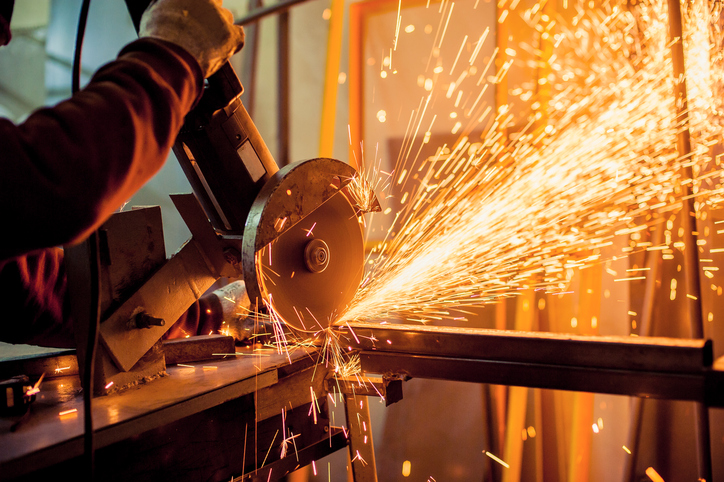
A career in welding requires skilled professionals with an awareness of health and safety practices. Professional welders often work in extreme conditions involving high temperatures, gases and fumes, electrical voltage, and ultraviolet rays. Knowing how to safely operate industry-grade equipment within that environment is an essential skill.
One of the most common tools in welding is an angle grinder. Grinders are used extensively in the preparation of work to cut, grind, blend, buff, and clean metals. While grinders are a common feature of welding, they still carry a number of safety hazards. That’s why it is important that those in the industry learn how to properly use a grinder in order to minimize the associated risks. If you’re considering joining the welding profession, keep in mind these safety tips when working with a grinder.
Make Sure to Choose the Right Wheel
First and foremost, you need to ensure you have selected the right wheel for the material and application. For example, a grinding wheel should never be used to cut, and a cut-off wheel should never be used to grind. Likewise, using the wrong grinder for your chosen material can cause damage to the wheel. If you were to use a wheel meant for steel on aluminum, the wheel could become clogged and break down during the process. Professionals with welding technician training will be able to identify the designated uses of different grinding wheels.

It’s also important to pay attention to the revolutions per minute (RPM) of a wheel to ensure you don’t exceed the maximum RPM recommended by the manufacturer. While a wheel may fit on a grinder, it doesn’t mean it’s intended for that grinder. You never want to use a wheel on a grinder with a different RPM rating. It’s a good idea to check the label on both the wheel and the grinder before assembling the two parts.
Always Use a Wheel Guard
As a professional welder, you’ll likely use a grinder in a variety of ways and over a prolonged period of time. Naturally, grinders are subject to cracks and damages with extensive usage. It’s important to ensure that a grinder is in good condition before using it, and to properly install the wheel guard.
Wheel guards are used for deflecting sparks and debris away from the operator, and to protect users in the instance that the wheel guard detaches. Grinding wheels are at risk of cracking or breaking, and if this happens, pieces of shrapnel can be sent flying. For that reason, it’s essential to use the proper wheel guard in the correct position at all times. Most guards provide 180-degree coverage, and can easily be adjusted so that the exposed part of the wheel is positioned away from you.
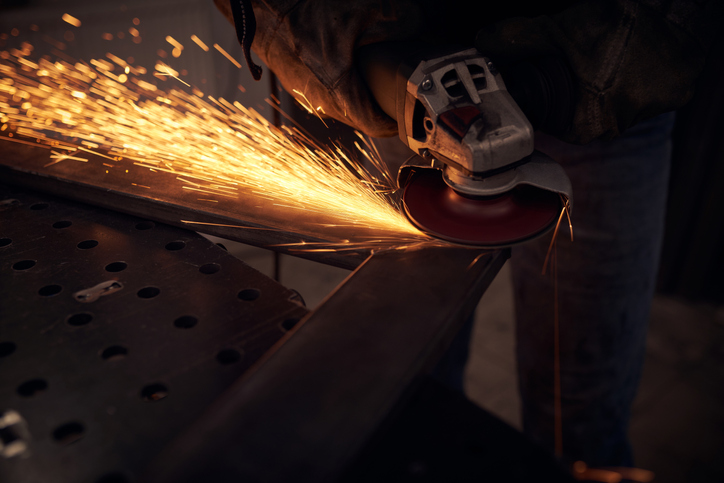
Take Care of Your Space After Welding Technician Training
Students in welding classes can expect to take courses in health and safety, where they learn to create a safe work environment and to minimize general hazards in welding. When using an industry grinder, it’s important to take measures to protect your face and body from harmful materials.
Before starting their work, professionals should wear all of their Personal Protective Equipment (PPE), including safety glasses, a helmet, ear protection, gloves, and aprons. These will protect operators from abrasive particles. It’s important not to wear loose-fitting clothes or jewelry while grinding, and to keep hair away from moving parts.
By preparing yourself for the workplace and remaining mindful of your surroundings, you will be able to perform your job safely, efficiently, and effectively.
Are you interested in welding college?
Contact NATS to learn more about our program!

If you’re pursuing training in welding, know that there are a range of opportunities that await you in the industry today. Boilermaking, jewel and stonework, plumbing, and transportation assembly are just a few of the common options in this trade. The job market for skilled welders is expanding and now spans a wide range of manufacturing sectors. If you’re looking for a diverse, creative and manually-intensive career, welding offers rewarding prospects.
A great welding program will include both theoretical and hands-on training. Trainee welders can expect to learn about the modern methods and uses of welding, and be ready to apply them to an industry-grade job upon graduating.
To understand more about your options, let’s take a look at 4 surprising facts about this skill.
1. There Are Many Different Types of Welding
As a trainee welder, you’ll practice using a number of different methods. For those without any prior knowledge of the trade, welding school offers comprehensive training to
get you to grips with the mechanics of welding. Welding courses will familiarize you with modern equipment used across different processes to prepare you for practical industry work. At the North American Trade School (NATS), students gain both theoretical and hands-on understanding of major welding methods. These include Gas Metal Arc Welding, Gas Tungsten Arc Welding, Flux Cored Arc Welding, and Shielded Metal Arc Welding. Upon graduating, students often have the chance to apply this knowledge to an apprenticeship as an ironworker, pipefitter, and more.

2. Welding Teaches You Many Different Lessons
As a welder, you’ll master more than just manual and technical skills. It is a trade that teaches resilience, creativity, and organization when working in different settings. Welders are often exposed to smoke, heat, and other harsh substances in their work, while using technical equipment such as drills and grinders. Precision, stamina, and awareness of your surroundings are invaluable skills in this trade. In the NATS welder program, courses cover more than the basics of equipment and the processes of welding joints together. Students also learn the fundamentals of creating a safe working environment, and how to identify and control hazards in welding.
3. Most Man-Made Substances Involve Welding
Over 50% of man-made products today are constructed using welding. From large-scale industrial equipment to automobiles, to personal computers, welding techniques are used in most manufacturing processes. At our NATS welding program, practical lab training teaches students the techniques essential to real-life productions. Over a 55-week program, students at NATS have plenty of access to on-campus labs. Here, they’ll gain first-hand experience of modern equipment, and be ready to apply that knowledge to work in their field. Courses at NATS also teach students how to decipher welding symbols on blueprints and apply basic math to perceive volume, area, and effective part layout.
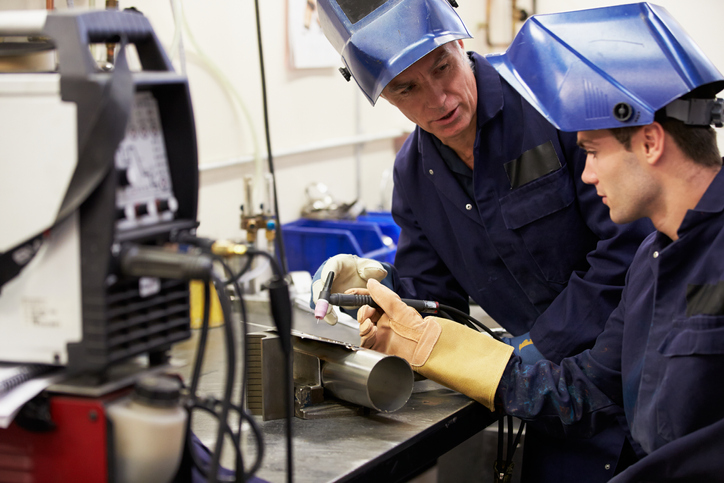
4. Welding Opens The Doors To Many Career Paths
Welding is a skill you can utilize across many different industries. Technological devices, transport links, and other industrial equipment all require welding to function. Welders can apply their skills to finish making popular consumer items such as toys, computers, and electronic devices. As such, modern production companies have an ever-growing demand for skilled welders. After completing an apprenticeship, trained welders can go on to work in the design and manufacturing of common appliances. A good welding college will offer you the training to support each and every career ambition. Graduates will come away with an experience of technical equipment, modern fabrication methods, and a trained eye for structure and design.
Do you want to learn more about the benefits of a welding career?
Contact North American Trade Schools today!
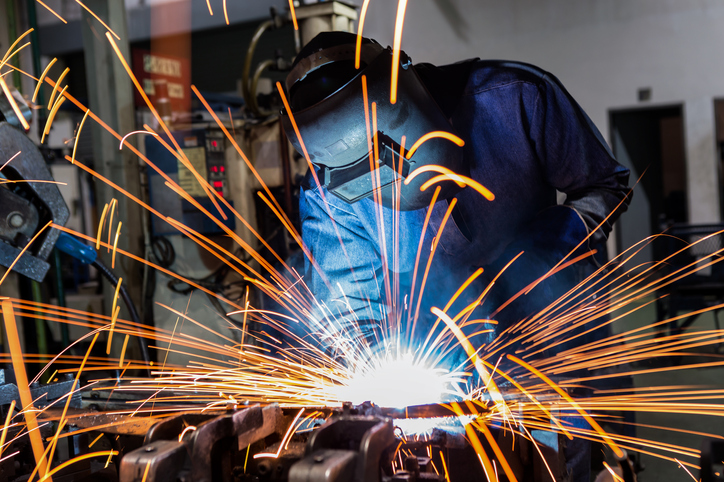
In a welding project, arc-on time has a direct effect on the number of parts completed during manufacturing operations. However, what many manufacturers don’t realize is that the average arc-on time is typically 10% to 12% of the welding process. Increasing arc-on time can result in improved productivity and cost savings, and thus, welding professionals should make boosting this metric a priority. There are many factors that contribute to improved arc-on time, and in order to see results, the entire welding process must be considered.
If you’re training for a career as a welder, here are three ways to increase arc-on time during a welding project.
1. If You’re in a Welding Career, Increase Arc-On Time By Choosing the Right Welding Process
If you’re having trouble increasing your arc-on time, start by analyzing the welding process you’re using. Making a change to the process can result in improved efficiency and increased arc-on time, but many manufacturers are hesitant to make this change due to the reapproval and further training necessary to switch processes. Options for welding processes include standard GMAW (gas metal arc welding), modified short-circuit GMAW, or a pulsed GMAW process. Switching from a standard to a pulsed process can result in benefits such as increased travel speeds, lower heat input, and reduced amounts of spatter, contributing to increased arc-on time.

Professionals in a welding career can also make changes to their process by utilizing metal-cored or flux-cored wires instead of a solid wire, which is conventionally used in GMAW applications. Depending on the materials being welded, a metal-cored wire can result in faster travel speeds to boost arc-on time. Welders may also utilize different shielding gases to improve the productivity of their process. Most manufacturing operations utilize 100% carbon dioxide shielding gas, but substituting a mixed gas, such as one composed of 90% argon and 10% carbon dioxide, can produce fewer spatters and faster travel speeds. This allows welders to spend less time on post-weld grinding—increasing arc-on time.
2. Welders Can Check Their Parameters and Consumables to Increase Arc-On Time
Arc-on time can be negatively impacted by inaccurate parameters and faulty consumables–factors which not only increase inefficiency, but are preventable. When welding professionals check that their parameters are correctly inputted before beginning the welding procedure, they can reduce the chances of having to solve issues through rework or spending excess time on post-weld cleanup. Professionals can check parameters such as heat input, travel speed, and wire stick-out. With the right travel speed heat will be controlled, reducing spatter and optimizing penetration. Additionally, if too much wire is sticking out, there will be excessive spatter, requiring more rework and extra post-weld cleanup.
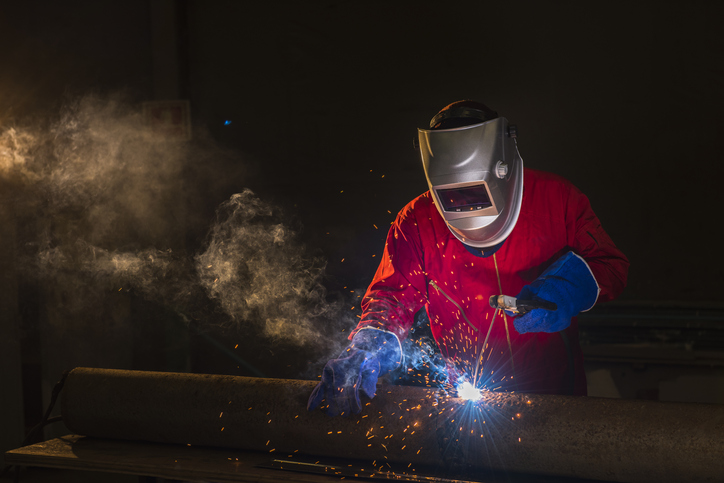
Before beginning the welding process, those in welding technician training can also ensure that their consumable connections are properly adjusted and correctly installed. Welding professionals can check for loose connections or worn weld cables to prevent a poor quality welding job or increased spatter. If the quality of these connections is confirmed beforehand, troubleshooting time can be reduced.
3. Take Advantage of Technology to Increase Arc-On Time
Advances in technology offer many advantages to welders looking to improve their arc-on time and increase efficiency. Technology is being increasingly used to improve welding power sources–making welding machines more accurate and easier to use. Some welding power sources today feature synergetic control, which allows them to automatically make changes in accordance with the operator’s adjustments. This also allows the operator to increase their arc-on time without worrying about parameters. Today, welding systems also offer a simplified machine setup–reducing the time welders spend setting up by adjusting other parameters according to the material thickness. These technologies improve accuracy, reducing spatter and post-weld cleaning to optimize arc-on time.
While these three factors contribute to increased arc-on time, those interested in entering a career in welding can also increase their arc-on time by receiving the proper training. Students at the North American Trade Schools’ (NATS) welding program benefit from hands-on training to prepare for a welding career. For welding graduate Emily Harrison, her “favourite thing about [NATS] was the knowledge of the teachers and how much practical work you were able to do.” With training from NATS, you’ll be equipped to identify ways in which arc-on time can be increased throughout your welding career.
Are you interested in taking welding courses?
The North American Trade Schools’ welding program can launch your career—learn more today!
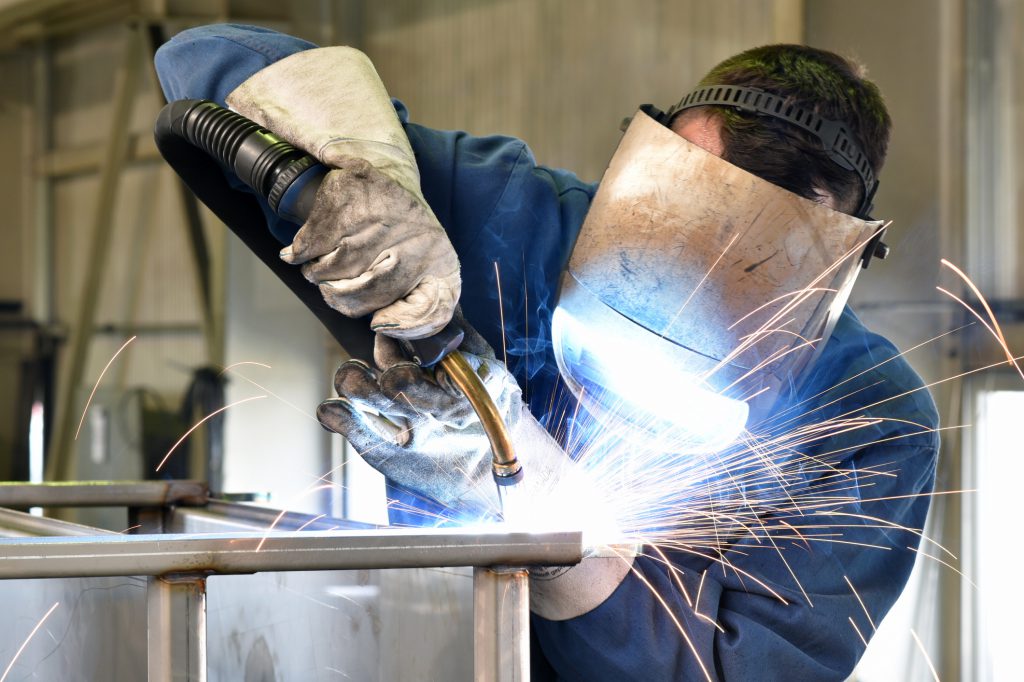
If you’re considering a career in welding, it’s more than likely that you’ll be using the 7018 welding rod for various welding purposes. The type of welding rod used for a project depends on the material being used and the requirements of the job at hand. Welders must consider factors such as corrosion resistance, tensile strength, polarity, weld position, and more. A common type of welding rod is a welding electrode, a coated metal wire composed of materials that are consistent with the metals being welded.
There are many different types of welding electrodes, which come in different levels of coating and different sizes. Here, we’ll take a look at the 7018 arc welding rod, an electrode commonly used by welders for a number of purposes.
An Introduction to the 7018 Welding Rod for Welding College Students
The 7018 welding rod is a consumable electrode rod, and is typically used for welding carbon steel. The iron-based flux compound coating this electrode is characterized by a low hydrogen content, setting the 7018 apart from other welding rods. The 7018’s minimal amount of hydrogen allows for a weld that is both tough and resistant to cracks–making it a great option for a number of projects. When welding, its flux compound vaporizes, keeping moisture, hydrogen and air from contaminating the weld bead.
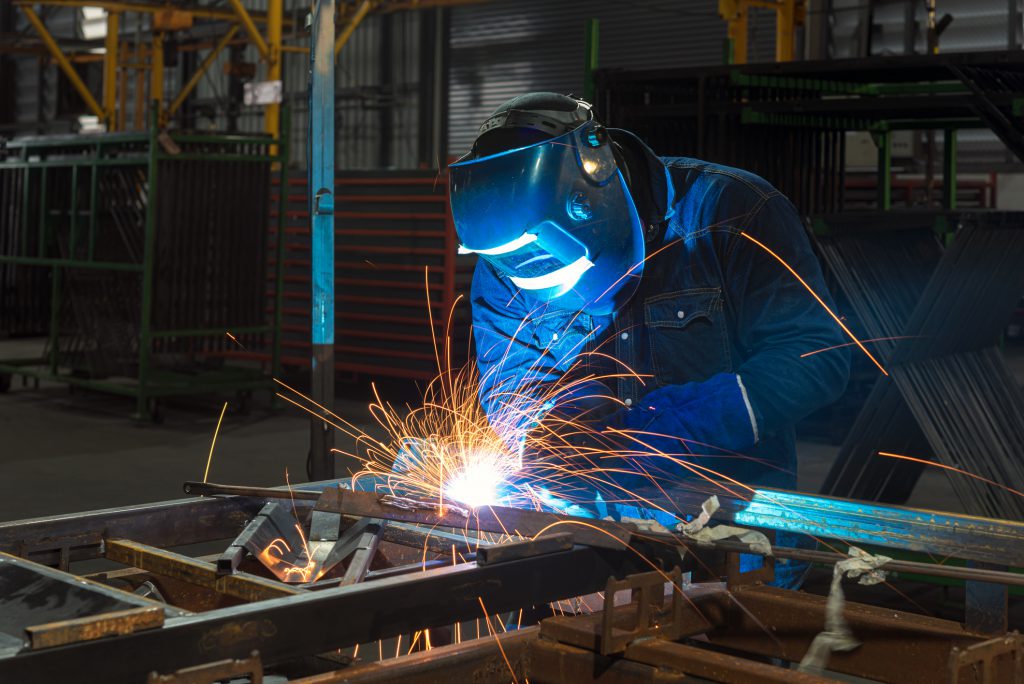
As those with welding technician training will come to learn, the 7018’s numbers can be used to understand its function, as with any welding rod. In the 7018, the “70” dictates its tensile strength, which is equal to 70,000 lbs per square inch. The third digit, the“1,” denotes the welding positions that the 7018 can be used for. The number 1 means that the 7018 can be used for any welding position. The “8” signals the electrode’s coating type–the kinds of current which can be used, and its penetration. In the 7018, the “8” shows that it’s composed of a low-hydrogen flux compound, which allows for a medium-penetration weld compatible with AC, DCEP, and DC currents.
When Do Welders Use the 7018?
The 7018 has a wide range of applications, making it a popular choice among welders for a number of projects. Not only can it be used in any welding position and with a number of different currents, but it produces a relatively steady arc with a low quantity of splatter. The 7018 is used mostly for structural welding due to the strong and ductile weld it produces, and its versatility qualifies this rod for a number of different applications. In addition to structural projects such as high-rise buildings, dams, and bridges— which benefit from the high degree of strength characteristic of the welds created by the 7018—this electrode can also be used to weld pressure vessels, pipes, boilers, and other powerful equipment.
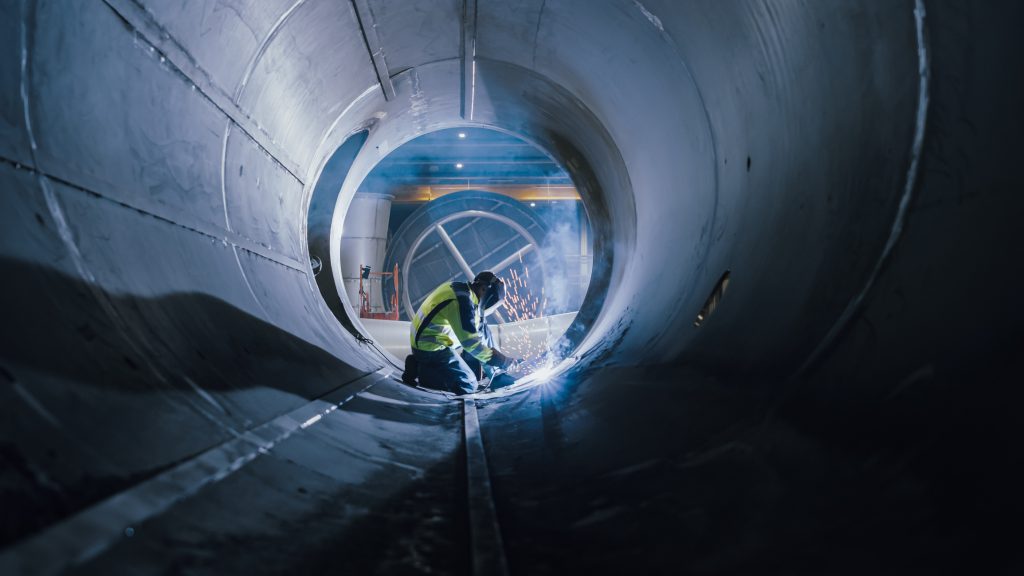
If You’re in Welding Technician Training, Here’s How to Use the 7018
When welding with the 7018 electrode, it’s important to follow a few requirements. First, welding students should make sure to use the correct welding amperage. The right amperage depends on the diameter of the rod in use, which is determined by the thickness of the steel being welded. When using a 7018 welding rod, the welding pro should keep in mind that the strength of these welds tends to make them solidify more rapidly. This welding rod is a consumable electrode–meaning it gets shorter throughout the welding process. Thus, welders should be careful to continuously keep a consistent distance between the electrode’s tip and the metal while concentrating heat at the joint of the weld. The 7018 should be dragged along the metal to ensure that the filler material is secure. With experience, welders will be able to feel when the weld is firmly fixed.
Learning how to use the 7018 takes some practice, relying upon the level of knowledge that can be gained from the right type of welding college program. The North American Trade Schools’ welding program allows students to gain the hands-on training necessary to become skilled experts in the industry. For Welding Graduate Emily Harrison, her “favourite thing about the campus was the knowledge of the teachers and how much practical work you were able to do. It was very helpful.”
Are you ready to learn from the best?
Explore welding classes at NATS today!



